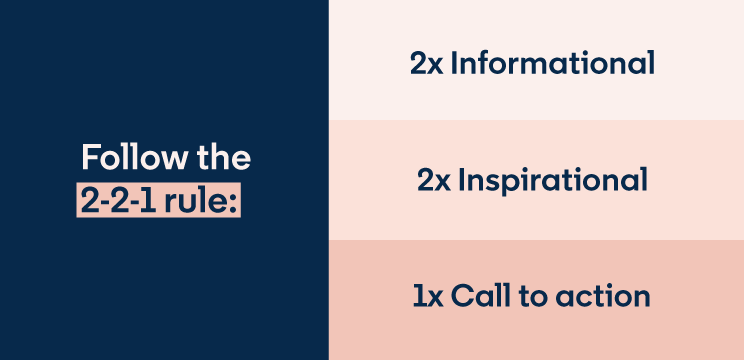
How to Create Content Marketing That Connects with Your Nonprofit Audience
Content marketing is a pillar of digital marketing strategies far and wide. Why? Because it works — for organizations of all types, shapes, and sizes.
Since this approach focuses on helpfulness and value above all, content marketing for nonprofits can be an especially effective strategy. It represents an opportunity to engage a targeted audience with a connective message, explaining the importance of your cause and driving action to support it.
Follow these best practices to set your nonprofit’s content up for maximum impact.
Content marketing for nonprofits: 5 ways to grow your impact
Be strategic with content marketing campaigns and activities.
Content marketing is an expansive and versatile practice, but it’s best used as part of a larger marketing strategy for nonprofits. To make the most of this approach, take a big-picture view of planning your content and integrating it with other marketing, recruiting, and fundraising initiatives.
Set guidelines for how your content will be created, scheduled, and published to ensure a consistent cadence and balanced mix. As a rule of thumb, consider following a 2-2-1 model: for every one post linked to a strong call to action (such as asking people to donate or volunteer), aim to create two posts that are purely informational and two that share inspiring stories to showcase your nonprofit’s impact.
Driving action and results with your content marketing is important, but demonstrating helpfulness and value can be guiding lights to draw people in and encourage long-term support.

Aim to create an emotional connection with your cause.
When your goal is to create content that connects and resonates, emotional impact is an essential factor. Rally support for your nonprofit by underscoring both what you’re trying to accomplish or change and the importance of taking action.
A 2023 study for the Journal of Consumer Behavior analyzed the impact of emotional appeal on nonprofit advertising, focusing specifically on the relative effectiveness of positive and negative appeals. The authors concluded, “The results suggest that a positive appeal is more effective in generating a more positive attitude and a positive emotional valence towards the advertisement, which could benefit the [nonprofit] in the long term. But a negative appeal is more effective if the goal is to achieve immediate donations.” This indicates that a tactful combination of uplifting and urgency-building content can help you achieve both your short- and long-term goals.
Speak to various key audiences and stakeholders.
Becoming overly focused on your nonprofit’s audience of potential donors is understandable, but it’s important for your content strategy to account for all relevant audiences. Depending on the nature of your organization, these might include:
Partners and collaborators
Beneficiaries and clients
Media entities
Government officials and policymakers
Community leaders and influencers
Potential visitors to your institution
It’s also important for nonprofit content marketing to address the audience of current and future volunteers and staff. Clearly defining and communicating your employer brand and employee value proposition can help you reduce recruitment costs and attract people who would thrive at your organization.
Get people excited about working with your nonprofit by highlighting factors like growth opportunities and the ability to make a real difference in your career.
Remix and repurpose high-performing content.
Creating enough content to maintain a consistent pipeline of valuable output can be challenging for those who are pressed for time and resources. Finding ways to breathe new life or inject new value into content that’s already found traction with your audience can be a handy shortcut.
This might involve taking a large digital asset you’ve created, like a guide or webinar, and slicing it up into smaller insightful nuggets. Or, maybe your top-performing blog post that’s been sliding down in the search rankings could be updated or refreshed to get a boost in the eyes of the search engine.

Conducting an inventory or audit of your existing content can help you quickly identify opportunities in your content library.
Tailor your content to the platform or channel.
Content tends to register better with audiences if it fits the context in which they’re seeing it. Your nonprofit’s content is also likely to perform better if designed with its channel objectives in mind.
For example, content created for your blog or website should generally be optimized for organic search. Content for paid media campaigns is more often optimized for conversions. Content for social media, meanwhile, tends to be optimized for visibility and engagement, which can look different depending on the platform.
When tailoring your content for LinkedIn — or remixing your existing content for this platform — aim to use high-quality images, tag relevant individuals or LinkedIn Pages, and use the “Notify Employees” feature to encourage sharing.
Learn more: LinkedIn Articles Best Practices for Nonprofits
Make content marketing work for your nonprofit organization
The great thing about content marketing is that it levels the playing field. Your nonprofit might be working with a smaller budget or social media following at the moment, but if you’re able to create content that is genuinely helpful and valuable for your various audiences, you can help them to find you.
Explore the LinkedIn for Nonprofits Resource Hub for more ideas and best practices to help propel your nonprofit’s content marketing strategy.

